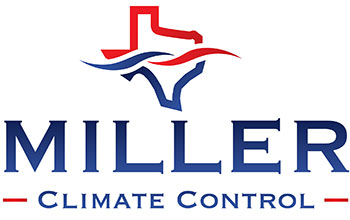
You shouldn’t need to sacrifice comfort or spend a lot to keep your home at the right temp during summer weather.
But what is the right temp, exactly? We discuss advice from energy pros so you can select the best temp for your loved ones.
Here’s what we recommend for the most energy-efficient setting for air conditioning in Georgetown.
Recommended Thermostat Settings for Summer
Most people find placing the thermostat at 72-73 degrees provides ideal comfort. However, if there’s a big difference between your indoor and outside warmth, your electrical expenses will be higher.
This is our advice based on the U.S. Department of Energy (DOE) and ENERGY STAR®.
While at home: 78 degrees. While that seems hot, there are approaches you can keep your home refreshing without having the AC going constantly.
Keeping windows and window treatments down during the day keeps cold air where it belongs—within your home. Some window coverings, including honeycomb shades or plantation shutters, are designed to provide added insulation and improved energy savings.
If you have ceiling fans in your house, the DOE says you can move thermostat temps about 4 degrees warmer without sacrificing comfort. That’s since they cool with a windchill effect. Since they cool people, not rooms, switch them off when you exit a room.
If 78 degrees still seems too hot on the surface, try doing a test for a week or so. Start by upping your temperature to 78 degrees while you’re at your house. Then, progressively turn it down while following the advice above. You could be amazed at how comfortable you feel at a higher temperature setting.
While away: 88 degrees. There’s no need to keep the air conditioner on all day while your residence is unoccupied. Moving the setting 7–10 degrees warmer can save you as much as 5–15% on your air conditioning costs, according to the DOE.
When you come home, don’t be tempted to put your thermostat below 78 to cool your residence faster. This isn’t effective and typically results in a bigger air conditioner cost.
A programmable thermostat is a helpful method to keep your temp controlled, but it requires setting programs. If you don’t utilize programs, you run the risk of forgetting to move the set temperature when you leave.
If you’re looking for a convenient fix, think over installing a smart thermostat. This thermostat connects with your phone, so it is aware when you’re at home and when you’re gone. Then it intuitively changes temperature settings for the best savings. How much exactly? Typically $180 each year on heating and cooling, according to ENERGY STAR.
Another benefit of getting a smart thermostat? You can use your phone to watch and adjust temperature settings from just about anywhere.
While sleeping: Around 70 degrees. While ENERGY STAR advises 82 degrees, that could be too uncomfortable for many families. Many people sleep better when their sleeping space is chilly, so that’s why the National Sleep Foundation advises 60–67 degrees. But that could be too chilly, due to your clothing and blanket preference.
We advise following a similar test over a week, putting your temp higher and steadily turning it down to determine the right temperature for your family. On cool nights, you might discover keeping windows open at night and running a ceiling fan is a preferable option than operating the air conditioner.
More Approaches to Save Energy During Hot Weather
There are added ways you can spend less money on air conditioning bills throughout warm weather.
- Buy an energy-efficient air conditioning system. Central air conditioners only work for about 12–15 years and become less efficient as they get older. An updated air conditioner can keep your house more comfortable while keeping energy bills down.
- Book regular air conditioner service. Annual air conditioner maintenance keeps your equipment operating smoothly and might help it operate more efficiently. It may also help lengthen its life span, since it helps pros to pinpoint little troubles before they cause a major meltdown.
- Replace air filters often. Read manufacturer instructions for switching your air filter. A dusty filter can result in your system short cycling, or turn on and off too much, and drive up your utility.
- Inspect attic insulation levels. Nearly 90% of residences in the U.S. don’t have enough insulation, according to the Insulation Institute. The majority of southern climates should have 13–14” of attic insulation, while northern climates need 16–18”.
- Have your ductwork checked. Ductwork that has come apart over time can seep cool air into your attic, walls or crawl space. This can create big comfort problems in your house, such as hot and cold spots.
- Seal holes, doors and windows. Keep muggy air in its place by sealing openings. You can also caulk or weather strip doors to keep more conditioned air indoors.
Conserve More Energy During Warm Weather with Miller Climate Control LLC
If you are looking to conserve more energy during hot weather, our Miller Climate Control LLC experts can help. Get in touch with us at 512-937-2001 or contact us online for additional details about our energy-saving cooling products.

